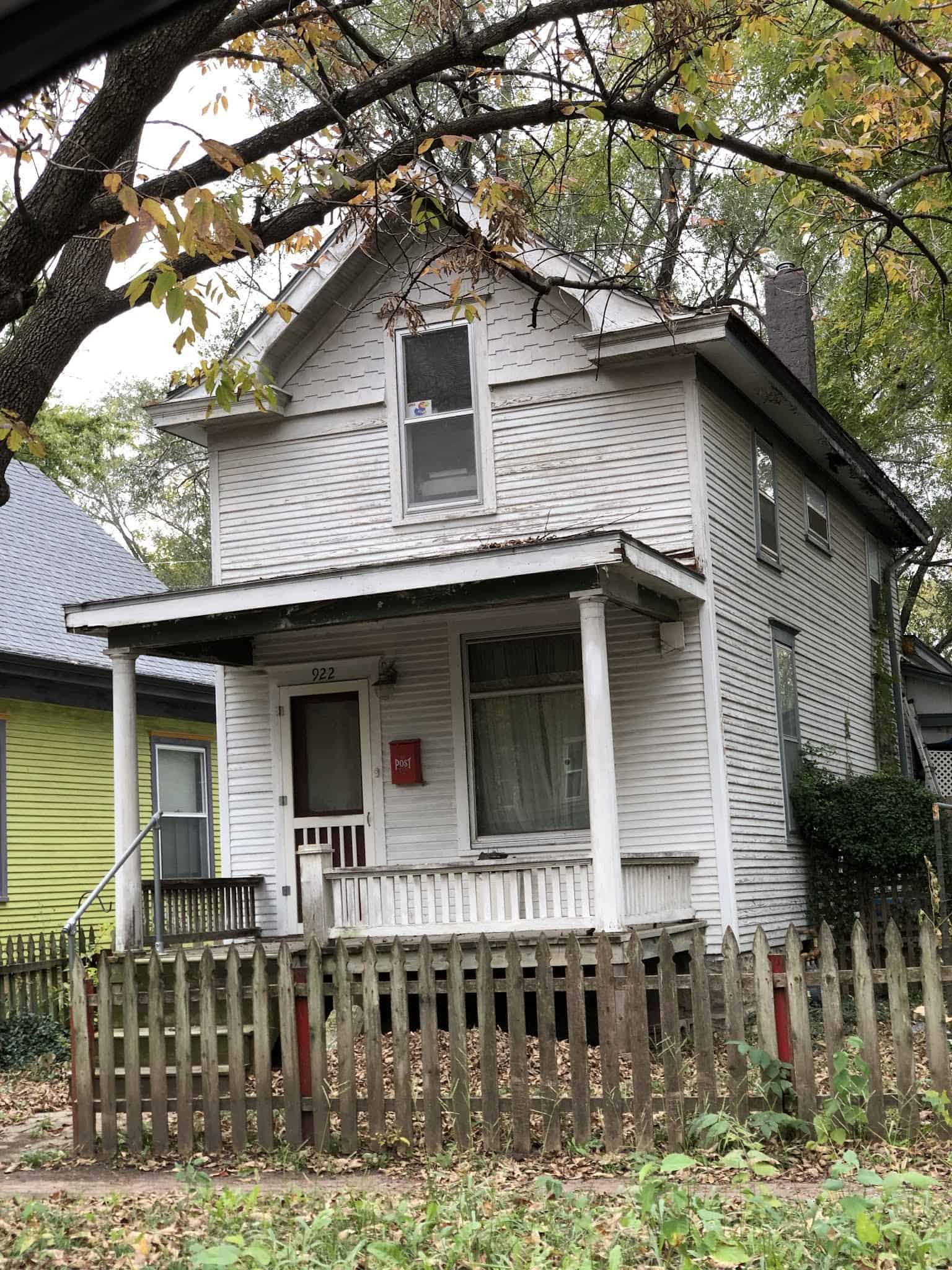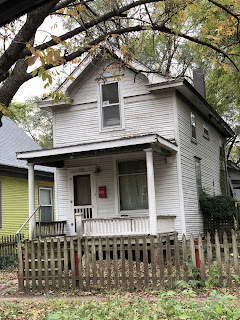Just a few weeks ago, in the month of Halloween, no less — I received an email from a physician who lives in a distant state. He asked me to find his poltergeist! He explained that when he was young, his family would go spend the summers with his grandparents. He was given the attic room in their old house. He was a teenager and experienced terrors from an enraged ghost. He told me he wanted to find out the name of the dead person, with a photograph. He would be able to identify him as he had a visual of him — having seen the apparition. Well, in my mind, this translated into doing a house genealogy. They make wonderful gifts for someone who owns an old home. However, I only include notable people of honor, or those who lived sweet lives; unless the current owners request the stories of notorious people as well. I think it is interesting to know who shared your little spot on the earth.
A client asked me to find his poltergeist.
You can start by pulling deeds. Not an easy task unless you can find the Chain of Title, which may be available at an Abstract Company. Otherwise you will need to start at the County Courthouse, and contact the Recorder of Deeds. He will most likely tell you they have been microfilmed and are housed off-site at the local historical society.
But in searching for the poltergeist, I bypassed the deeds. I didn’t want to know who owned the house. I needed to know who lived there. Oftentimes houses are rented. I started with City Directories, which include a section of “reverse address search”. It is like a phone book, but it also can include extra interesting information, such as the occupation of the resident. Not all have been scanned, digitized and are available online. I pulled as many names as were available on the internet. The house was built just after the turn of the century. As I needed to see every City Directory for those 100 years, I went to the Jackson County Missouri Historical Society in the Harry Truman Courthouse in Independence, Missouri.
I met the young archivist, Danielle Hall, who gets as excited as I do about exploring the past. We are definitely kindred spirits. She astounded me with her knowledge of her archives. She was in every nook and corner of the courthouse pulling boxes and ledgers and photographs and newspapers for me. I was also there for another client — trying to find a prostitute/madam in the bordello area of Kansas City Missouri during the 1880’s. Oh how I love my career! I invented it when I realized that only about 10% of all information so far has been digitized and provided online. No wonder everyone deadends when they are searching for their ancestors. So, I go into repositories, attics and basements of courthouses, antique stores, etc looking for the other 90%. The hunt is thrilling. The find is exhilarating. That is why I started this blog. To encourage people to do the search for themselves. Especially as a themed vacation!
I put on the white gloves to protect the ancient books, and slowly opened City Directories from 1880 – 1950. They crumbled at my gentle touch, covering my shirt with a fine dust. I experience an indescribable feeling when encountering surviving items of the long past. It is a sense of reaching back through time, and actually touching those who lived then, even for the briefest of moments.
I finished finding the rest of the names of those who lived in the house. The next step was for me to look at the census records to determine family members and boarders in the house. My physician client said it was a male apparition, so I did not need to document the females in the house. There are 2 census records to be searched: the Federal Census is done every ten years, with the year ending with zero. The State Census is done every ten years, ending with 5 (1905, 1915, etc.).
With my work done, I relaxed and chatted with Danielle. She showed me the death photo of Wild Bill Anderson (Jesse James gang). They have an incredible inventory of archives. Book authors, film makers, thesis/dissertation researchers use these types of facilities for their research. So their holdings are hugely impressive.
Danielle said hundreds of glass plate photos had been donated. She remembered seeing a portion of an old camera and printer in the basement. So she went on a search around town in other basements and found all the missing pieces to put it back together again for the glass plate photography. She showed me pictures on her phone of the pieces in the basements as she had accrued them. I would never have identified any of it. But she figured it out and recreated the camera/printer. Now that is a remarkable archivist!
With my completed list of names, I could now research every male who lived in the house. I wanted to first discover who died in the house. Thankfully, Missouri has scanned every death record and provided them online on their website: Missouri Digital Heritage.
I discovered that only one elderly man had died in the house, naturally, of a stroke. So, on to the next step: the newspapers. I searched online in specific local newspapers. My first search was for the address. This provided me with weddings and social events that happened on the property. But no murders or tragedies had occurred onsite. So then I put each male name in the search bar. The case then got interesting!
I found an old newspaper article about one of the men who died by falling down an elevator shaft in a building under construction. He was only 47 and was listed as a resident of the house at the time of the accident.
I soon found another article about a different resident of the house who was fatally injured in an accident at the Kansas Flour Mill. He was descending on a manlift. Something went terribly wrong and he was crushed.
I then took the dates and searched through microfilm to gather as much information as I could about the deaths.
I provided all the information to my physician client, including documentation and citation of all sources. We are not sure how this poltergeist-thing works. Does the ghost have to die in the house or does he just need to live there? Or maybe, as my sister surmised — someone was clandestinely killed in the attic room, and it was never discovered.
My client mused about going to the house (yes, it still stands) and talking to the current owners. I cautioned against that, as they may love their house, and telling them about a poltergeist may color their happy view of their home. Instead I recommended he tell them he is doing a house genealogy and ask if they know anything about the history. They might volunteer information about the ghost. Otherwise, I sent the physician the names of recent-past occupants of the house. They may be more willing to talk about a poltergeist, since they no longer live there.
Whether looking for a phantom or doing a house genealogy, following these steps of research should garner you a fascinating wealth of information. The process of hunting and discovering is the best part!





